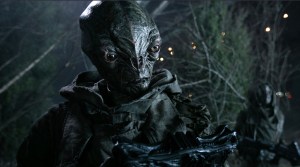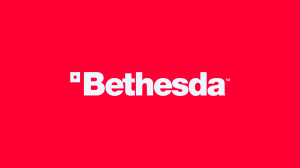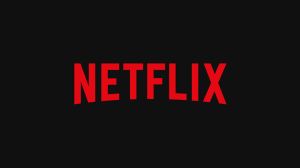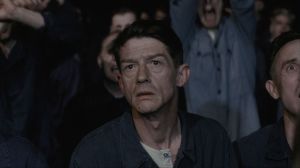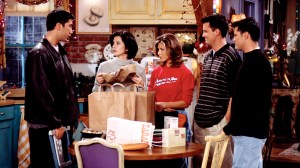There are two days left in the crowdfunding campaign to support Ronald Wimberly’s Gratuitious Ninja — abbreviated as GratNin — as a physical release. Published in a 400-foot, accordian-folded format, GratNin is comics as an art object, and the campaign also looks to bring to life some cool ancillary art, like a subway map that interacts with the story, and collectible trading cards that provide insight into the world of the comic. Originally published as a webcomic designed for infinite scroll, the story was a challenge to bring to life on paper in a cool, meaningful way. Now, with over $85,000 raised in preorders, that cool, creative package is going to become a reality.
Videos by ComicBook.com
Yesterday, ComicBook shared the first part of a lengthy conversation between Wimberly and best-selling Captain Marvel and Bitch Planet writer Kelly Sue DeConnick, in which they talked not just about GratNin and the process behind it, but about comics, pop culture, and their philosophies on art more generally.
You can see the trailer for GratNin below, followed by part 2 of the conversation between Kelly Sue DeConnick and Ronald Wimberly. You can pre-order Gratuitous Ninja on Kickstarter here.
Ronald Wimberly: There was some internet stuff going on a while back with ninjas and pirates and stuff, and I think I was kind of like, “All right.” I guess that stuck in the back of my imagination, and pirates started to show up in GratNin a few iterations back. Also, I had been interested in Naruto, and watching Naruto, I was thinking, “Man, this guy just really wants to recuperate all of like the most heinous ninjas,” you know what I mean? He’s always recouping them, he’s always trying to figure out a way for them to get back in the village. And Naruto really is about generational trauma, right? So I was thinking about pirates, I’m thinking about the marinage, thinking about the sort of radical elements of piracy, like its relationship to the Black, radical tradition, and then that just stuck, and it became essentially the backbone of this comic.
Also thinking about prison styles, or the way prison informed boxing, and thinking about how if Wong Fei-hung can become this sort of mythical character, or Bak Mei, Pai Mei, can get mythologized in manga, manhwa, TV shows, films — why don’t I do some of that with these sort of mythical street boxing elements, and tie it in with my own sort of mythologized version of the Black radical tradition? It was something that I was doing more and more.
I’m getting away from — quick sidebar to Laab – just like polemics in the form comics, or like essays and theory, and thinking more about as an artist, how I can connect to the images and the ideas that are inside me, and give space for them to manifest in whichever way that I’m working. Laab has been a journey around that. It’s become a challenge to convey to our I collaborators that aspect that that’s kind of what I want Laab to be is people who have that internal life, but pulling that out. Miranda Taqiyya did this one comic – I was given all these different comics that were kind of political, or trying to be heady, and she just dropped this one really nasty comic. I was like, “This is exactly what I want.” This is something that you have to show your ID to look at in the back part of the comic book store, but at the same time, it’s of a piece with what I wanted the magazine to be. I’m hoping that I can get to that space myself more and more. I haven’t done a lot of “rude” comics. I’m not that person. I’m sure it probably shows, “oh, this guy is a pervert, just from his drawings,” but I always thought I didn’t do anything like that. And I was kind of like, “Who needs another guy putting his fantasies out like that?” But I’ve been thinking more and more about how I can contain and hold that sentiment as well as really reaching into the depths of all of the different things that I’ve put inside my mind and my imagination. I can always edit, but I’m thinking about that more and more now.
DeConnick: There’s a, there’s a few things there that, or hooks that are little sweater threads I’m kind of interested in. One is, going back a little bit, that I’ll do all of this planning, right? And the book I write is never the book I think it’s going to be, ever. It’s not about what I think it’s going to be about, either literally or in a thematic sense. And I am not a particularly spiritual person. I’m not a metaphysical person, and I even actually have to wrestle with myself to not be disrespectful of that, but that’s one of the beautiful incongruities of art-making, is when it’s working, it does feel a bit like magic. It feels like discovering, not creating, and it does feel you found something deep within yourself, that came entirely from outside yourself.
Wimberly: Or overlapping even, right?
DeConnick: Yeah. And so, I’ll plan these things that are all very “think-y,” that are sort of over-intellectualized, and then I go to execute. And as I’m writing a scene, the only way I can really explain it is, it feels like I’m lying. It feels false, or like I’m trying to make characters do things they don’t want to do. Then, I have to adjust, and it happens every single f—ing time, and every single f—ing time I am shocked by it, like it has never happened before. So for me, the moment of it is in the writing of that scene. If you have those moments, do you have those moments in the planning? Or do you have those moments in the writing or the drawing?
Wimberly: The moments like “This is a lie,” or like, this is where it’s going off rails?
DeConnick: Yeah. Where it’s like, intuition and plan are coming into conflict.
Wimberly: The here’s the thing — and this weird little client job I’m doing right now, here’s how it’s playing out. What I try to do is preserve for myself that spontaneity, when I’m drawing a page. It could happen in the script too; I’ve been writing a bunch of stuff ostensibly for TV, and in that case, it’s like, “I damn well better figure it out here on the page.” But with the comic, it’s almost like it gets back to that outline thing. If I’m doing it for myself, I don’t know what people are going to say on the page. I don’t know what they’re gonna look at. I don’t know what this character in the background is doing, how they’re going to end up changing what happens, you know? What I think I’m figuring out from the TV thing is, I’m looking at other people’s scripts. Working with Spike is a whole other thing, but in a way you have to write for who’s going to read the script. Not for what I’m going to, what I need to draw picture. This is something I didn’t know when I worked on Prince of Cats. I had editors here and there, but I wasn’t writing for the editor. I think if I were to again, I might write for the editor. I might write to get the editor to understand, solving some of those problems we’re talking about – like that lie that’s on the page or the plan, that very rigid plan. I don’t want to do that for animation. I want to lock the script, because depending on what type of animation, you’ve got a half dozen people pitching scenes sometimes in a TV animation. They are ostensibly writing the show, and then you just have someone who’s picking and choosing the scenes to put it together. That’s crazy. I don’t even understand how that kind of animation works.
This is going to sound crazy, but say what you will about [Walt] Disney. It seemed like he had this. That’s the whole point is storyboarding! The whole point in storyboarding is, we’re going to save this money, and we’re going to save this work. Because what else you’ll say about Walt? That mother—er did not like to waste money. That’s where the storyboards come in.
So I feel then in this case, in animation, it’d be different than comics. I’d want to lock the script as much as possible. I don’t want to find surprises. I guess maybe this helps for the writer to be somewhat of a draftsman to, or have like a formal approach that helps them solve these problems. I don’t think you want to get to. You don’t want to Milt Kahl having spent a day storyboarding, and you’re like, “Yeah, actually, I don’t like this line; f–k off and do another scene.” Not only is that expensive, but how many times can he do that, and remain like fresh, and invested in the work?
DeConnick: We’re a little bit talking about apples and oranges, because when I talk about discovering things in the script, that you’re not going quite where you thought you were going. I think that happens most of the time, well before there’s anyone else involved. But what you say about animation is a really solid point.
I often will talk about the hierarchy of formality and scripting. The most formal script you can write is the theatrical script. And when I go through this hierarchy, when I’m kind of explaining it to young writers, I go through it with theatre, features, television, and comics. I have an animation project that is unannounced. I have no idea if it’ll end up making it to the screen or not, but I have a thing I’m working on currently. I’m so early in the process, I’m not at the point of scripting that yet, and I don’t know where animation falls in that formality hierarchy.
When you write for theatre, it’s the most spare script. You want to do that least directing from the page. Ideally, the perfect theatrical script would be dialogue only, right? Only the absolutely necessary stage directions, because if you’ve done this really well, it’s going to be produced over and over again over time. It will be read by hundreds of people, thousands of people, if you’re Shakespeare, maybe millions of people — probably we’re not Shakespeare, but let’s pretend — over generations. You want that script to be open to interpretation, by as many different directors and performers as possible. We say we never see the same production of Hamlet twice, because it’s different every night, because it’s different in every moment.
And then you go to film. That’s going to be read by the few hundred people who are going to produce this thing one time, and slightly less formal. Now, the screenwriter still needs to be careful that they’re not stepping on the toes of the director or the cinematographer by calling shots from the page. There’s a certain degree of formality, but, but it’s looser than the theatrical script.
Wimberly: Okay. So when you say formality, you’re talking in terms of how you relate to the others in the creative process.
DeConnick: Yeah. I mean it in several senses. I mean it in the formality of the language. In a theatrical script, if you do have stage directions or something that isn’t purely dialogue, the voice of those directions is very spare, or very small. Also, there is a format. Centered dialogue. There’s a format; “this is the way this is done.” And then you go to the feature, which can be slightly less formal. You can have a more personal voice, a little bit, and there’s more direction happening. You’re getting action more in a screenplay than you are in a theatrical play.
And then down to television, where it’s going to be read by probably less than a hundred people. It’s going to be produced very quickly. These are the same people that are working together every week. And so it becomes less formal again. And as formality is going down, the writer becomes more centralized. The writer is not the primary artist in the film, um, unless they also directed it. The writer is not the primary artist in the production of the play. But as we get down to TV, especially in the contemporary model, except for pilots, the primary artist is often the showrunner, who is also usually the lead writer. The director on the pilot will have a lot of that primary artist’s position, but they’re, really collaborating with the showrunner, because the director on the pilot does not stay with the show very often, and then directors switch out episode to episode. So it’s really that the showrunner, who’s the writer, who’s taking that central role.
Then you come down to comics, where it splits again if you’re doing it in the model that I do it in. Now, if you’re doing it in the model that you’re doing it in, it’s a perfect pyramid, right? If you’re doing it in this sort of auteur-cartoonist way, you’re not only the primary artist, you’re the artist, you’re the only artist. I don’t think writer is necessarily the primary artist in a comic script, but I think they’re the first artist, because it all begins with the script.
Really, it usually starts with a conversation with the artists. But the artist is working from the script, and you’re telling the story to them, and they’re telling the story to the reader. So it becomes very informal, because this script is going to be read by five people. And there is no set comic script format. Everybody scripts differently.


